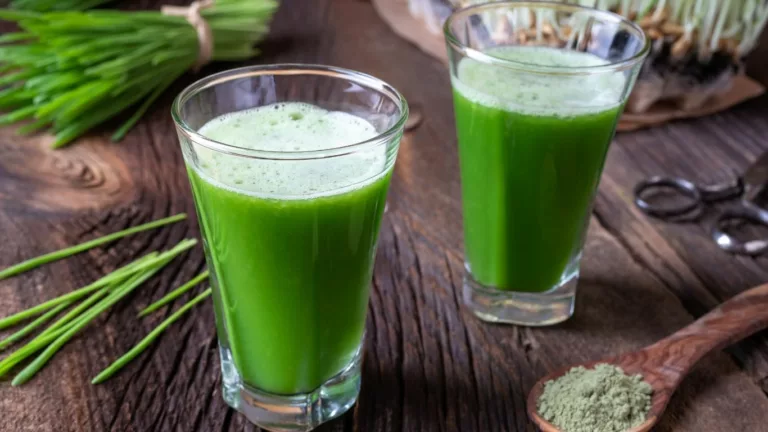Slippery Elm for GERD: A Natural Acid Reflux Remedy That Works?
If you’ve ever felt that burning discomfort in your chest after a meal, you know how relentless acid reflux can be. As someone who’s spent way too many evenings popping antacids like candy, I get the frustration. I used to dread bedtime because that’s when the reflux kicked into high gear—until I stumbled upon slippery elm. This herbal remedy isn’t just an old wives’ tale. It’s become one of my favorite go-to natural options that doesn’t feel like a compromise. Let’s break down why it’s gaining popularity for GERD relief and how it could actually work for you, too.
What Is Slippery Elm and Why It Matters for GERD?

Slippery elm (Ulmus rubra) is a type of tree native to North America. The inner bark has been used for centuries as a remedy for digestive issues, including acid reflux, due to its natural mucilage content. When mixed with water, it forms a soothing gel-like substance that coats and calms irritated tissue.
For GERD (Gastroesophageal Reflux Disease) sufferers like myself, this mucilage is a game changer. Instead of just neutralizing stomach acid, slippery elm provides a protective layer over the esophagus—helping reduce that awful burn and throat irritation.
What surprised me most? Unlike some over-the-counter meds, it doesn’t come with rebound effects or dependency issues. That alone made it worth a try in my book.
How Slippery Elm Soothes Acid Reflux

The real power of slippery elm lies in its ability to:
- Form a protective barrier in the throat and stomach lining
- Reduce inflammation caused by acid irritation
- Stimulate mucus secretion that further protects sensitive tissues
- Promote healing of damaged esophageal cells
It’s especially helpful for those of us dealing with persistent throat burn from acid reflux or a constant dry cough. Personally, I noticed my voice felt less hoarse and sore after using it consistently for a few weeks. That’s no coincidence—studies have pointed to slippery elm’s demulcent action as a key reason it helps manage these symptoms effectively.
How to Take Slippery Elm for GERD

There’s no one-size-fits-all approach, but the form you choose can make a big difference. Here are the most common methods I’ve tried:
1. Slippery Elm Powder (My Favorite)
I mix about 1 teaspoon of slippery elm bark powder with warm water (not hot—hot water can break down its mucilage) and sip it slowly before bed. It’s not the tastiest, but the coating effect is almost instant.
2. Capsules
For people who can’t stand the texture, capsules offer a clean, travel-friendly option. Just be sure the supplement contains pure slippery elm without unnecessary fillers. I still prefer powder because it works topically on the throat going down, but I keep capsules in my bag just in case.
3. Lozenges or Chewables
These are a convenient daytime solution. I like keeping one in my mouth after meals when I feel that subtle reflux creep coming. Just check the label to avoid added sugars or citric acid—common ingredients that can backfire for GERD sufferers.
According to the Mount Sinai Health Library, slippery elm is generally safe, though you should avoid taking it alongside medications as it may delay absorption. That’s why I always give it at least an hour’s buffer around other supplements or prescriptions.
What Science Says About Slippery Elm for Acid Reflux

While clinical research on slippery elm is limited compared to conventional drugs, it’s promising. A study published in the Journal of Alternative and Complementary Medicine looked at a blend containing slippery elm for functional bowel disorders and reported symptom relief without harsh side effects.
More importantly, real-world users (myself included) report consistent benefits when taken regularly. And for a condition like GERD, where stress, diet, and lifestyle often play a role, slippery elm offers a gentler long-term option.
It’s also featured as part of natural relief strategies in our GERD natural remedies guide—which dives deeper into herbs and supplements that work well in combination with slippery elm.
Who Should (and Shouldn’t) Use Slippery Elm?

Slippery elm is generally considered safe, but it’s not for everyone.
- Great for: People with chronic acid reflux, sore throat from GERD, or those who prefer natural remedies
- Use with caution if: You’re on medication—especially time-sensitive drugs like thyroid hormones
- Avoid if: You have a tree bark allergy or are pregnant/nursing (consult a qualified provider first)
For me, it was a no-brainer once I figured out when to take it and how to balance it with meals. If you’re curious whether it fits into your GERD plan, consider reading this guide on lifestyle changes for GERD relief to pair it with long-term improvements.
Best Time and Frequency to Take Slippery Elm for GERD

Timing is everything when it comes to managing GERD, and slippery elm is no exception. I’ve found that when I take it at the right moments, the results are noticeably better—especially if I stick to a rhythm.
Here’s what worked best for me:
- Before meals: Taking it about 20–30 minutes before eating can help create a barrier against acid irritation.
- Before bedtime: This is my go-to time. I mix a teaspoon of powder in warm water and sip slowly to protect my esophagus while I sleep.
According to clinical herbal medicine resources, using slippery elm 2–3 times daily can maximize benefits, especially during active flare-ups. Just remember: consistency trumps high dosage.
How Much Slippery Elm Should You Take?

One of the biggest questions people ask is about dosage. The truth? There’s no official “one-size-fits-all” dose, but there are smart starting points based on what’s worked for others—and for me.
Typical Dosage Guidelines
- Powder: 1 teaspoon mixed with 4–6 oz warm water, 1–3 times a day
- Capsules: 400–800 mg per serving, once or twice daily (read product labels carefully)
- Lozenges: 1 lozenge as needed, especially after meals
If you’re new to herbal remedies, start small. I began with a single dose at night and gradually added a second dose mid-afternoon when I knew I’d have a heavier meal.
Also, avoid combining slippery elm with medications in the same window. I space mine at least an hour apart. This avoids any interference with nutrient or drug absorption, something also echoed in this WebMD guide on slippery elm.
Combining Slippery Elm With Other Natural GERD Remedies

Slippery elm is great solo, but it really shines when paired with other natural supports. I’ve experimented with a few combinations that seemed to amplify results—especially during stressful weeks when my reflux tends to flare.
Some effective combos:
- Slippery Elm + Marshmallow Root: Double demulcent action. Soothes and protects from both ends.
- Slippery Elm + Licorice Root (DGL): DGL helps reduce inflammation while slippery elm coats. Just avoid whole licorice if you have high blood pressure.
- Slippery Elm + Aloe Vera Juice: I sip aloe in the morning and slippery elm at night for round-the-clock support.
Want to learn more about one of these powerful herbal allies? Check out our detailed write-up on licorice root for GERD—it pairs perfectly with slippery elm for people needing extra protection.
There’s even some early discussion in integrative medicine reviews suggesting that synergistic herbal combinations may help reduce PPI dependence over time. That said, always consult a professional before modifying your medication routine.
When You Might Start Noticing Results

Don’t expect instant magic—slippery elm isn’t a quick fix like antacids. It works gently and gradually. For me, I noticed less throat irritation after about 4–5 days, and a definite reduction in nighttime reflux within two weeks.
By week three, I was sleeping better and didn’t feel the need to elevate my bed quite as high. That’s huge if you’ve ever tried to wedge yourself between pillows like a burrito just to avoid the burn.
Some friends I’ve recommended it to reported faster results—especially those using lozenges after meals or taking it alongside ginger tea, which has its own calming effects.
Common Mistakes to Avoid

Even though slippery elm is safe and natural, it’s still possible to sabotage its benefits. I made a few rookie mistakes early on, so here’s what you should look out for:
- Taking it with meds: Big no-no. It can slow down absorption.
- Using boiling water: High temps ruin the mucilage. Stick to warm, not hot.
- Inconsistent use: You won’t see results if you only take it once in a while. Be consistent for best results.
- Wrong form: Some people expect capsules to coat the throat like the powder—doesn’t work that way. Use powder or lozenges if throat irritation is your main symptom.
If you’re also struggling with bloating or burping, you might want to explore these tips on burping and acid reflux to round out your GERD relief strategy.
Who’s Talking About Slippery Elm? Experts Weigh In

Functional medicine practitioners and herbalists often include slippery elm in reflux protocols. While conventional gastroenterologists may not prescribe it, many recognize its safety and supportive role—especially for patients with medication sensitivity or those exploring integrative care.
The Mayo Clinic notes slippery elm’s traditional use for digestive problems and advises consulting a professional, particularly if combining it with meds. That’s solid advice I followed early on, and I’m glad I did.
For an overview of how natural therapies fit into the big picture of GERD relief, don’t miss our comprehensive natural remedies guide—a perfect place to plan a holistic reflux strategy that works for your body.
Long-Term Use: Is Slippery Elm Safe to Take Daily?

One question I get a lot—especially from readers trying to move away from medications—is whether it’s safe to use slippery elm every day. Based on what I’ve researched and experienced, the answer is yes… with a few smart precautions.
Slippery elm doesn’t build up in the body, doesn’t cause rebound acid (like PPIs sometimes do), and generally doesn’t lose effectiveness over time. In fact, its long-term benefits may get better as your tissues heal and inflammation calms down.
Still, I take occasional breaks. Every couple of months, I’ll scale back for a week just to give my body a reset and to observe if I even need it anymore. Spoiler: I usually do—especially after a spicy dinner or if I’ve been slacking on sleep.
If you’re thinking of going the herbal route long-term, this GERD diet plan is also a great support piece. Combining the right foods with slippery elm can make a huge difference in how your gut responds over time.
Can You Build Tolerance to Slippery Elm?

This is another common concern. While there’s no evidence that your body builds a “tolerance” to slippery elm the way it might with antacids or H2 blockers, sometimes people feel like it’s not working as well anymore. Usually, it’s because something else changed—like stress, diet, or other supplements.
In my case, I had a rough patch where slippery elm seemed less effective… until I realized I had been snacking late at night again. Once I cut that out and took my usual dose 30 minutes before bed, the soothing effect was back in full swing.
So no, your body isn’t likely to become resistant to slippery elm, but your habits can definitely influence its impact.
How I Personally Use Slippery Elm Today

If you’re wondering how I’ve worked slippery elm into my real-life GERD management routine, here’s a simple breakdown:
- Morning: I usually skip it unless I had poor sleep or heartburn the night before. If needed, I’ll do a lozenge after breakfast.
- Afternoon: If I know lunch will be heavy or acidic, I take a capsule or sip a half-dose of powder about 20 minutes beforehand.
- Evening: This is non-negotiable for me. One full teaspoon of powder in warm water, sipped slowly after dinner and before bed.
I also keep GERD-friendly snacks on hand throughout the day to avoid triggering symptoms between meals.
Warnings and When to Talk to a Doctor

Just because it’s natural doesn’t mean it’s risk-free. Here are a few reminders I wish I had known from day one:
- Always check your meds: If you’re on prescriptions—especially time-sensitive drugs—check with your doctor or pharmacist first. Slippery elm’s mucilage can slow absorption.
- Allergies: If you’ve ever reacted to tree bark or herbal supplements, start with a tiny dose or talk to a healthcare professional first.
- Pregnancy & Breastfeeding: There’s not enough evidence on safety, so err on the side of caution and consult a professional.
And of course, if your symptoms are severe or getting worse, don’t try to “herb your way” out of it. GERD can lead to serious complications if left untreated. Read more in our article on GERD symptoms you shouldn’t ignore.
What Makes Slippery Elm Worth Trying?

Honestly? Because it’s gentle, natural, and doesn’t come with the long list of side effects that made me wary of staying on PPIs for life. It’s not a miracle cure, but for people like me who are managing GERD long-term, it offers a sense of control and relief that actually feels good.
Here’s why I keep it in my GERD toolkit:
- It works with my body, not against it
- I can adjust the dosage depending on symptoms
- It helps me sleep without burning discomfort
- It fits naturally into a holistic routine (no hard commitment!)
If you’re exploring alternatives beyond the usual prescriptions, slippery elm deserves a real spot in your lineup. Combine it with mindful eating, stress management, and GERD-friendly lifestyle changes and you’ve got a solid foundation for relief.
Final Thoughts: Slippery Elm and Sustainable GERD Relief

Living with GERD doesn’t have to mean living on edge. Slippery elm has helped me reclaim those peaceful nights and quiet meals without the burn. It’s gentle, adaptable, and gives your body the kind of support that lasts beyond quick fixes.
Start small, pay attention to your body, and treat slippery elm as part of a bigger wellness picture—not a magic bullet. The combination of herbal relief, smarter habits, and patience really can lead to meaningful change.
And if you’re just starting your natural journey, be sure to explore our complete guide to GERD natural remedies to see how slippery elm fits into a bigger healing path.

Camellia Wulansari is a dedicated Medical Assistant at a local clinic and a passionate health writer at Healthusias.com. With years of hands-on experience in patient care and a deep interest in preventive medicine, she bridges the gap between clinical knowledge and accessible health information. Camellia specializes in writing about digestive health, chronic conditions like GERD and hypertension, respiratory issues, and autoimmune diseases, aiming to empower readers with practical, easy-to-understand insights. When she’s not assisting patients or writing, you’ll find her enjoying quiet mornings with coffee and a medical journal in hand—or jamming to her favorite metal band, Lamb of God.






